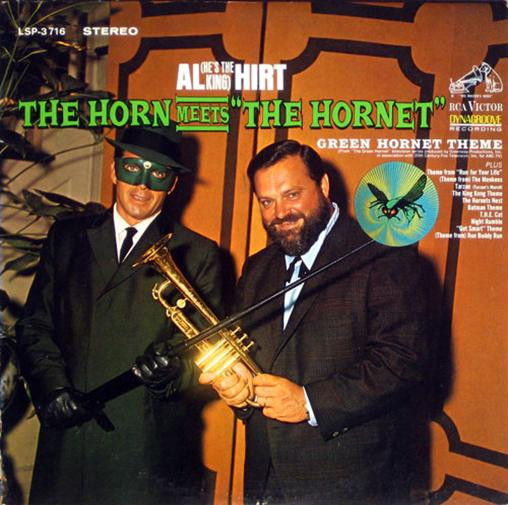The realm of television history is filled with iconic theme songs, but few have achieved the lasting recognition and cultural impact of The Green Hornet theme. This isn’t just a catchy tune; it’s a high-octane instrumental piece that perfectly embodies the energy and intrigue of the 1960s masked crime-fighter series. What makes this theme truly special is its fascinating connection to classical music and its transformation into a jazz-infused, trumpet-driven sensation, often referred to as the “Bumblebee Song” due to its frenetic energy.
From Classical Roots to TV Screens: The Bumblebee Inspiration
The story of the Green Hornet theme song begins with a piece deeply embedded in classical music tradition: “Flight of the Bumblebee.” Composed by Nikolai Rimsky-Korsakov in the late 19th century as part of his opera The Tale of Tsar Saltan, this orchestral interlude has long captivated audiences. Its playful and rapid melody vividly evokes the chaotic flight of a bumblebee, buzzing and darting through the air.

Al Hirt’s “Horn Meets Hornet” CD cover, showcasing his legendary trumpet performance of the Green Hornet theme song, a memorable example of a bumblebee song.
“Flight of the Bumblebee” is renowned for its demanding technicality. It’s not just about hitting the right notes; it’s about the sheer speed and agility required to execute the intricate melody. As Wikipedia succinctly puts it, the challenge lies in “the musician’s ability to move to them quickly enough,” making it a showcase of virtuosity that both challenges performers and enthralls listeners. This inherent energy and playful complexity made it a natural fit for the adventurous spirit of The Green Hornet.
The “Green Bee” Transformation: Jazzing Up the Classic
While the original radio program for The Green Hornet did utilize Rimsky-Korsakov’s “Flight of the Bumblebee,” the television series took a different, and ultimately more iconic, route. For the 1966 TV adaptation, the classical piece underwent a significant transformation at the hands of Billy May, a celebrated musician, arranger, and conductor. May infused the melody with a vibrant big band jazz style, giving it a distinctly modern and energetic edge. This jazzed-up rendition was even nicknamed “Green Bee,” highlighting its bumblebee origins and its fresh, contemporary sound.
This “Green Bee” version of the Green Hornet theme is most famously recognized for its electrifying trumpet solo. This crucial element was brought to life by the legendary New Orleans-born trumpeter, Al Hirt. Hirt, a master of jazz and his instrument, was perfectly positioned to tackle the demanding piece. His performance wasn’t just technically brilliant; it was infused with a swagger and dynamism that perfectly captured the Green Hornet’s persona.
Al Hirt’s Trumpet Takes Flight: An Iconic Solo is Born
While Lionel Newman conducted the orchestra providing the foundation for the theme, it was Al Hirt’s trumpet solo that truly soared. From the moment the song begins, Hirt’s virtuoso performance quickly takes center stage, becoming the defining characteristic of the Green Hornet theme. Although Al Hirt achieved mainstream chart success with “Java” in 1964, for many, his rendition of the Green Hornet “bumblebee song” remains his most enduring and recognizable piece, inextricably linked to the visual and auditory memories of the classic TV show.
The enduring power of this theme, and particularly Hirt’s solo, is undeniable. Decades after the show’s initial run, director Quentin Tarantino, known for his masterful use of music, paid homage to Bruce Lee and The Green Hornet by featuring the song in a pivotal scene in Kill Bill Vol. 1. This re-introduction to a new generation solidified the theme’s place in popular culture, ensuring that the “bumblebee song” of The Green Hornet continues to buzz in the collective consciousness.
In conclusion, the Green Hornet theme song is more than just an introduction to a television show. It’s a fascinating journey from classical inspiration to jazz reinvention, culminating in an iconic trumpet solo that has cemented its place in music and television history. Its connection to the frantic energy of the “Flight of the Bumblebee,” combined with Billy May’s arrangement and Al Hirt’s virtuosity, has created a truly unforgettable “bumblebee song” that continues to resonate with audiences today.

